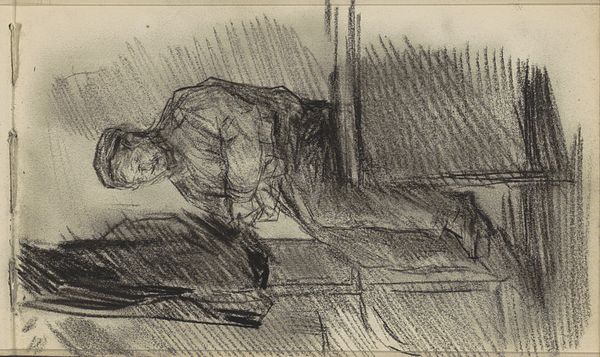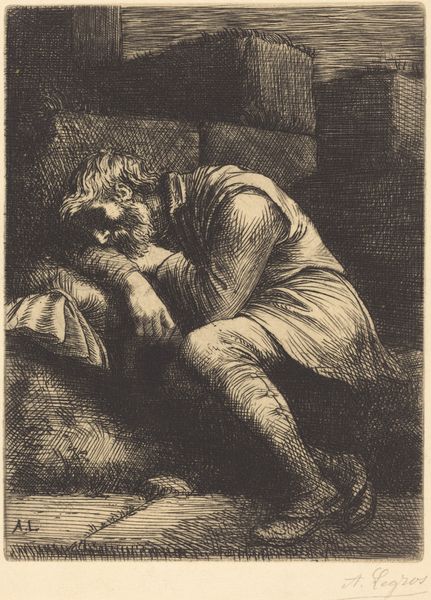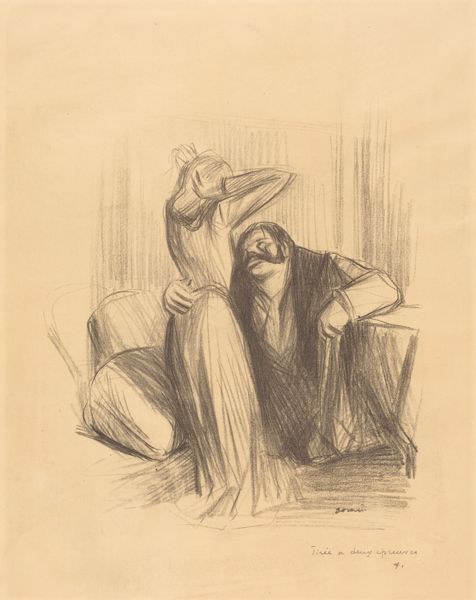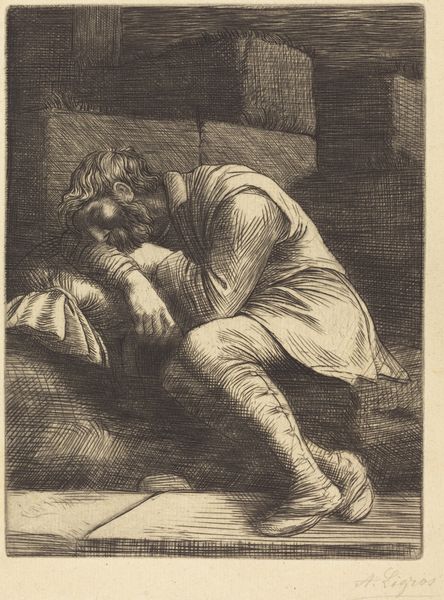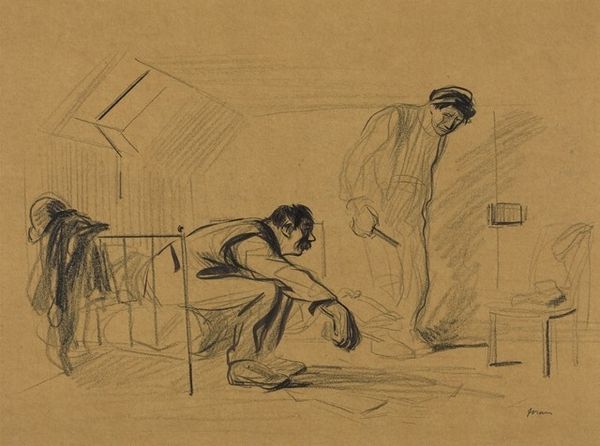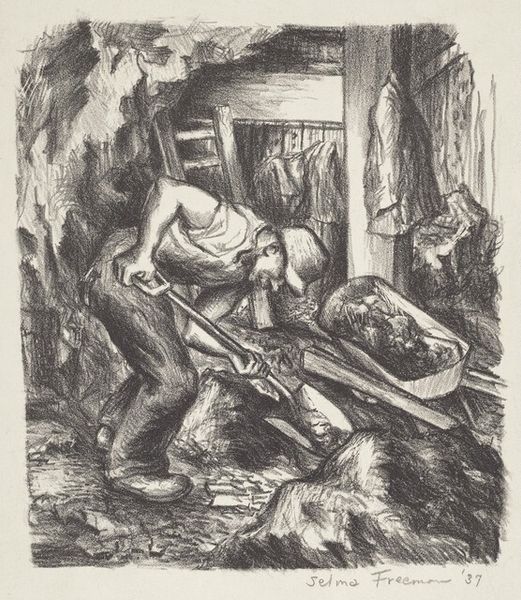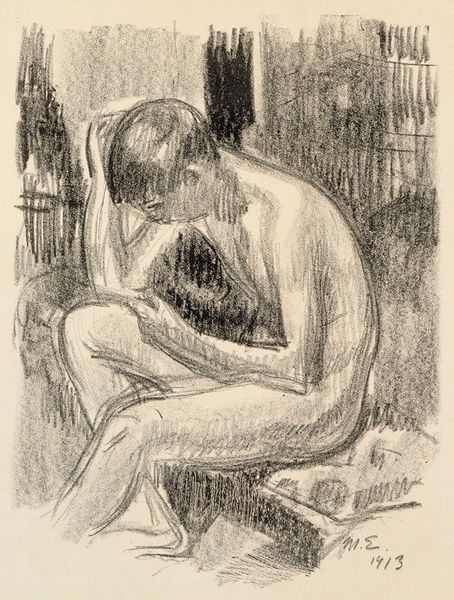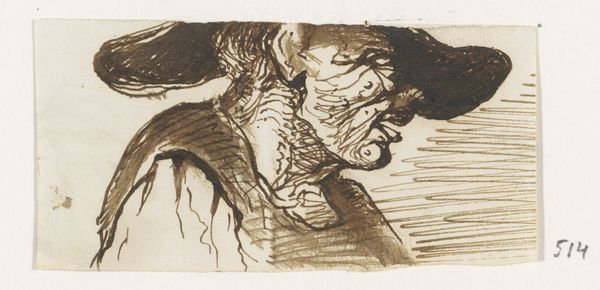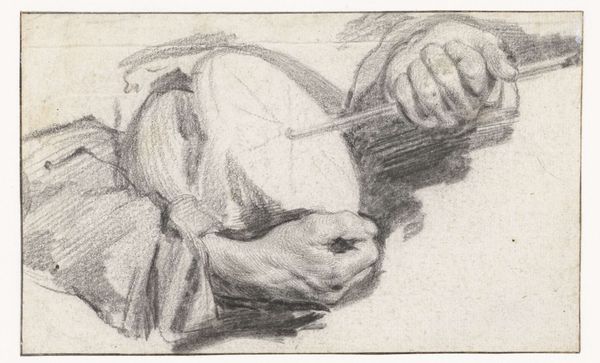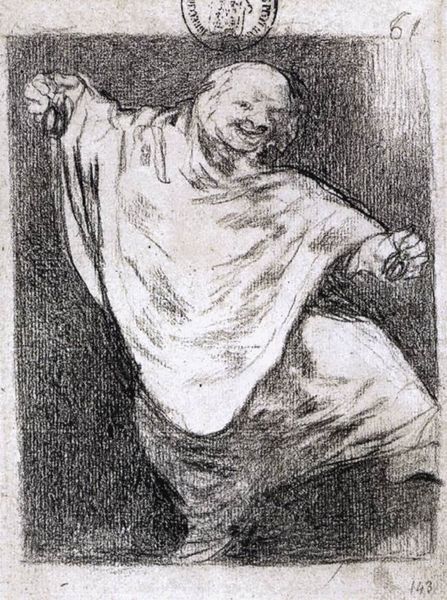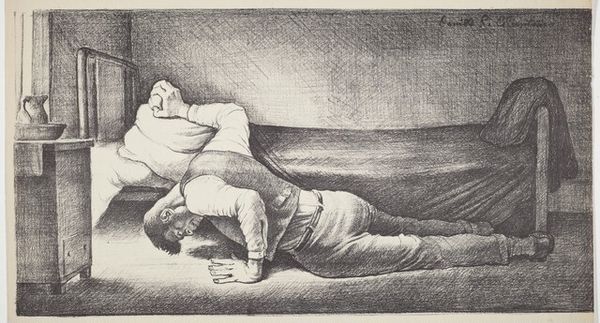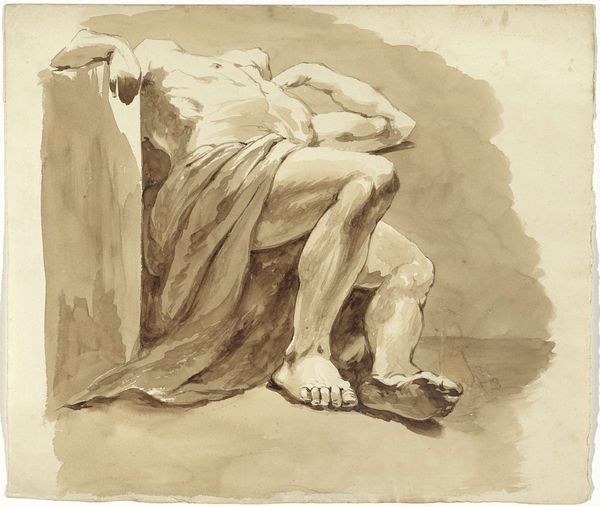
drawing, charcoal
#
portrait
#
drawing
#
charcoal drawing
#
figuration
#
pencil drawing
#
portrait drawing
#
genre-painting
#
charcoal
#
realism
Dimensions: 10 15/16 x 15 1/4in. (27.8 x 38.7cm)
Copyright: No Copyright - United States
Curator: This somber drawing, executed in charcoal, is titled "Common Labor." Myer Abel completed it in 1934. It resides here at the Minneapolis Institute of Art. Editor: The weight in those lines, the sheer fatigue practically radiating from the figure slumped over the table… it's a portrait of exhaustion. Curator: Absolutely. Notice how Abel uses light and shadow. There’s a lamp present, but it doesn't banish the encroaching darkness. Light exposes vulnerability, emphasizing the texture of skin stretched thin. Editor: And the choice of charcoal is masterful. It’s inherently gritty, almost dirty. Think about it – how it emphasizes not only texture but feeling—that grit becomes weariness, perhaps despair? This work reflects the struggles during the Great Depression and the everyday experiences of common labor. Curator: Consider the composition; we have a foreground figure in apparent exhaustion, with another blurred form almost blending into the background, seemingly still working. This creates a poignant juxtaposition; exhaustion vs. continuous struggle, but the overall muted symbolism points to resignation. What could a brighter or harsher composition evoke? Editor: Precisely! And Abel isn't merely documenting, he is commenting. He makes labor visible in a period in which jobs were in short supply, underlining the economic reality and precarity facing the labor class during the depression era. Art provided political space to show what happened to common people. The work asks us, in its own quiet way, what kind of support are we offering to the working people, what future could they create? Curator: What remains is not just a drawing, but an iconographic study in human endurance and the human price for survival. This simple medium makes its accessibility deceptively potent. It depicts more than common labor. It paints fatigue of existence, a symbol of labor's silent struggle. Editor: Yes, "Common Labor" leaves a mark. It’s a powerful commentary embedded in understated tones. Thank you for elucidating some aspects that help me see it clearly now. Curator: My pleasure. There are silent narratives that need a space, in public, to remind us what should remain present in society.
Comments
No comments
Be the first to comment and join the conversation on the ultimate creative platform.
